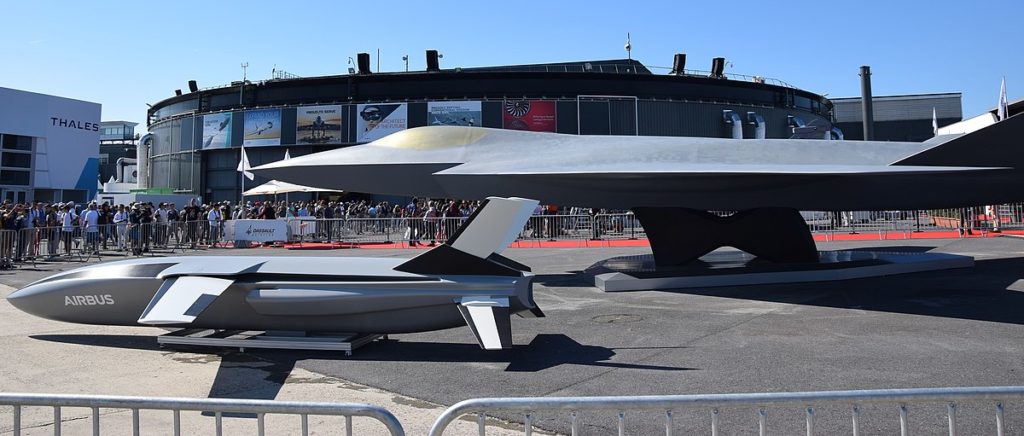What should have been a stellar 50th anniversary year for Airbus was tainted as the company took an eye-watering $4 billion in fines to settle fraud, bribery and corruption charges with France, Britain and the United States.
Airbus posted revenues of EUR70.5 billion for 2019, up almost 11 percent from 2018 revenues of EUR63.7 billion. The company posted a loss of EUR1.4 billion, compared to net income of EUR3.1 billion in 2018. The loss in 2019 was due to a variety of charges totaling EUR5.6 billion, which included EUR3.6 billion related to the settlement of corruption probes and EUR1.2 billion related to A400M issues.
The fines related to commercial aerospace and the way middlemen used bribery to land contracts. With the agreement, Airbus has avoided criminal prosecution, which would have barred it from many contracting opportunities in the U.S. and European Union.
With that out of the way, Airbus can now focus on what looks to be a challenging period to come.
For the full year 2019, Airbus set a new all-time annual record, delivering over 863 jets – slightly below its full-year target, announced in February 2019, of 880 to 890 commercial aircraft deliveries. The company’s backlog was 7,482 jets, not far below the company’s all-time backlog record high of 7,577 jets set in December 2018.
Much of Airbus’ recent success can be attributed to narrowbody airliners such as the A320neo and its most recent addition, the A220. Designed by Bombardier, the A220 was formerly known as the CSeries but has been rebranded now that it is under the auspices of Airbus Canada – an Airbus-led joint venture with the government of Quebec following Bombardier’s divestment of its stake in early 2020. Adding the CSeries to its product line has cost Airbus little in sales and expands the company’s offerings down into the 100-130-seat range of the regional jet market.
Production of the A220 is ramping up steadily, and Airbus is rumored to be looking into other possible variants such as a stretched model.

The A320 family remains the company’s best seller of late, with a new model, the A321XLR, an “Xtra Long Range” variant of the A321neo, gaining interest. Announced in 2018, the A321XLR boasts a range of 4,700 nautical miles (5,400 mi), or 15 percent more than the A321LR. This new aircraft model is aimed at taking some share away from Boeing’s planned New Mid-market Airplane (NMA), which has yet to be launched.
Turbulence Ahead
For years now airlines have posted consecutive growth as rising air traffic helped fuel profitability. In the near term, though, some fears are putting a damper on the market and, while a full downturn is unlikely, the market is expected to slow. Brexit, EU recession fears, and the recent COVID-19 epidemic are expected to be contributors to a slowdown.
According to Forecast International’s Civil Aircraft Forecast, orders have now declined in three of the past four years, but backlogs are large enough to afford both Airbus and Boeing considerable protection against all but the most drastic market fluctuations. The sheer size of the order backlogs will enable the two manufacturers to maintain, and even increase, production in the face of cyclical fluctuations in order rates.
Here the focus has been on managing aircraft delivery. Despite the difficulty in managing the supply chain, Airbus, as mentioned above, ramped up its delivery total to 863 aircraft in 2019, compared to 800 in 2018. Continued attention will be critical, as Airbus has announced production rate increases on several models, including an unprecedented 63 A320s per month by 2021. As such, the pressure on supply chains to meet the demands of delivering highly engineered components in increasing quantities and on just-in-time schedules will continue to be intense.
The fate of Airbus’ flagship A380 was sealed in early 2019 when its key customer Emirates canceled 39 of its remaining orders. This was exacerbated by Emirates’ decision in November 2019 to cancel an additional 39 A380 orders, reducing Airbus’ total A380 backlog to just 11 aircraft.
With no substantial A380 backlog remaining, production of the aircraft will end in 2021. Airbus executives had resisted letting the program die given the prestige they attach to building the world’s biggest passenger jet.
With Brexit “official” as of January 31, 2020, Airbus’ tone has shifted from its early dire warnings. Originally, the divorce of the U.K. from the European Union was heading for a no-deal exit, which could have hit the transnational factories of Airbus hard. However, Prime Minister Boris Johnson was able to secure and pass a deal in late 2019.
Throughout 2020, the U.K. and EU will be in a transition period in which both sides will develop new trade agreements.
Airbus’ wing production plant is located in the U.K. With the uncertainty removed thanks to a deal, Airbus officials are more sanguine about the factory remaining where it is. One lingering vulnerability is that additional costs in the post-Brexit U.K. will make it very difficult to make future investments in the region.
On the continent, things are also looking a bit down. According to reports, economic growth in the EU has slowed among its members, raising fears of a recession. Adding to this is a slowdown in the U.S., the region’s largest trading partner. If that weren’t enough, the economic impact of the Coronavirus (COVID-19) outbreak has yet to be felt. The fear is growing that the virus could severely hobble the Chinese economy, which in turn could push already vulnerable economies around the world into recession.
Abroad, the impact of the Coronavirus is just beginning to be felt. Earlier in February, Airbus announced that it was observing Chinese government requirements for staff to work from home as it deals with the Coronavirus crisis. As a result, the Tianjin Final Assembly Line facility, which is one of four A320 final assembly lines around the world, was closed for a short while. By mid-month, the company had been granted permission to slowly restart operations, while closely monitoring employee health and safety. The company said that China’s domestic and worldwide travel restrictions are posing some logistical challenges.
Meanwhile, Airbus Helicopters also saw some slowing in 2019 as customers’ pessimism over the global economic outlook began to manifest. The unit logged 310 net orders for 2019, almost 19 percent less than the 381 units ordered in 2018. Airbus Helicopters delivered 332 rotorcraft in 2019, down almost 7 percent from the 356 deliveries in 2018. At the end of 2019, the overall backlog stood at 695 helicopters. The aforementioned issues facing commercial aircraft production are the key factors as well in the slowing of the rotorcraft market.
Defense Counting on Program Support
On the defense side of the ledger, Airbus is counting on the continued support of developmental programs. The company, along with partner Dassault Aviation, is a key contractor on Europe’s proposed Future Combat Air System (FCAS), which is slated to complement and eventually replace current-generation Eurofighter and Rafale fighter aircraft between 2035 and 2040. The program took another step forward in 2020 when France and Germany awarded the Phase 1A contract, which launches the demonstrator phase for the FCAS.

Industry officials have stressed the importance of the program in maintaining an indigenous military aircraft production capability. Phase 1B, which will require an estimated EUR1 billion investment, is expected to face some painful politicking in light of current economic conditions. However, fears of a resurgent Russia may be enough of an impetus to keep it moving along.
Airbus Defence and Space continues to work on containing its troubled A400M program. The firm has reached a crucial agreement with the A400M program’s founding countries to delay deliveries of the military airlifter and, most critically, revise financial penalties. As a result of the agreement, the A400M production rate will gradually fall to eight from 2020 onward.
In 2019, the program was hit again with a new charge of EUR1.2 billion, bringing its total since the program began to over EUR9 billion. While the rebaselining of the A400M program was completed in 2019 and significant progress has been made on technical issues, the export outlook is increasingly limited due to the aircraft’s size, price tag, and level of performance. These factors, coupled with Germany’s ban on exports to Saudi Arabia, led Airbus to take the most recent charge.
Despite the issues and uncertainties, Airbus continues to perform well. The company does have some challenges ahead as it copes with these mercurial times, but key programs are stable and its sizable backlog will see it through any near-term difficulties.
A military history enthusiast, Richard began at Forecast International as editor of the World Weapons Weekly newsletter. As the Internet grew in importance as a research tool, he helped design the company's Forecast Intelligence Center and currently coordinates the EMarket Alert newsletters for clients. Richard also manages social media efforts, including two new blogs: Defense & Security Monitor, covering defense systems and international issues, and Flight Plan, which focuses on commercial aviation and space systems. For over 30 years, Richard has authored the Defense & Aerospace Companies, Volume I (North America) and Volume II (International) services. The two books provide detailed data on major aerospace and defense contractors. He also edits the International Contractors service, a database that tracks all the contractors involved in the programs covered in the FI library. More recently he was appointed Manager, Information Services Group (ISG), a new unit that encompasses developing outbound content for both Forecast International and Military Periscope.




